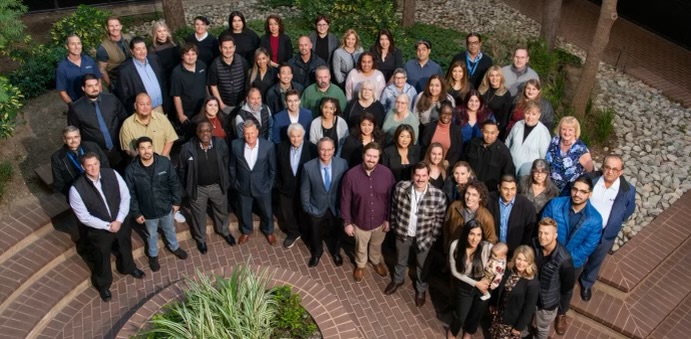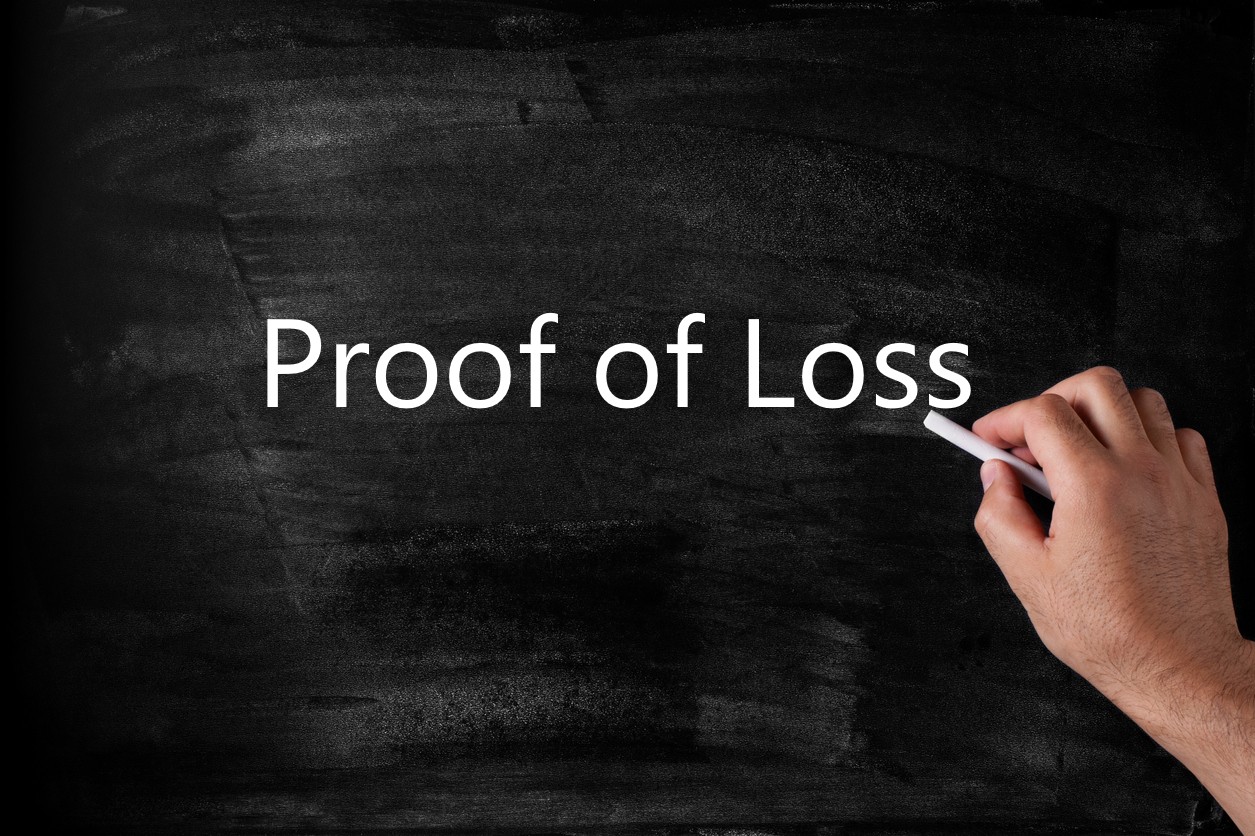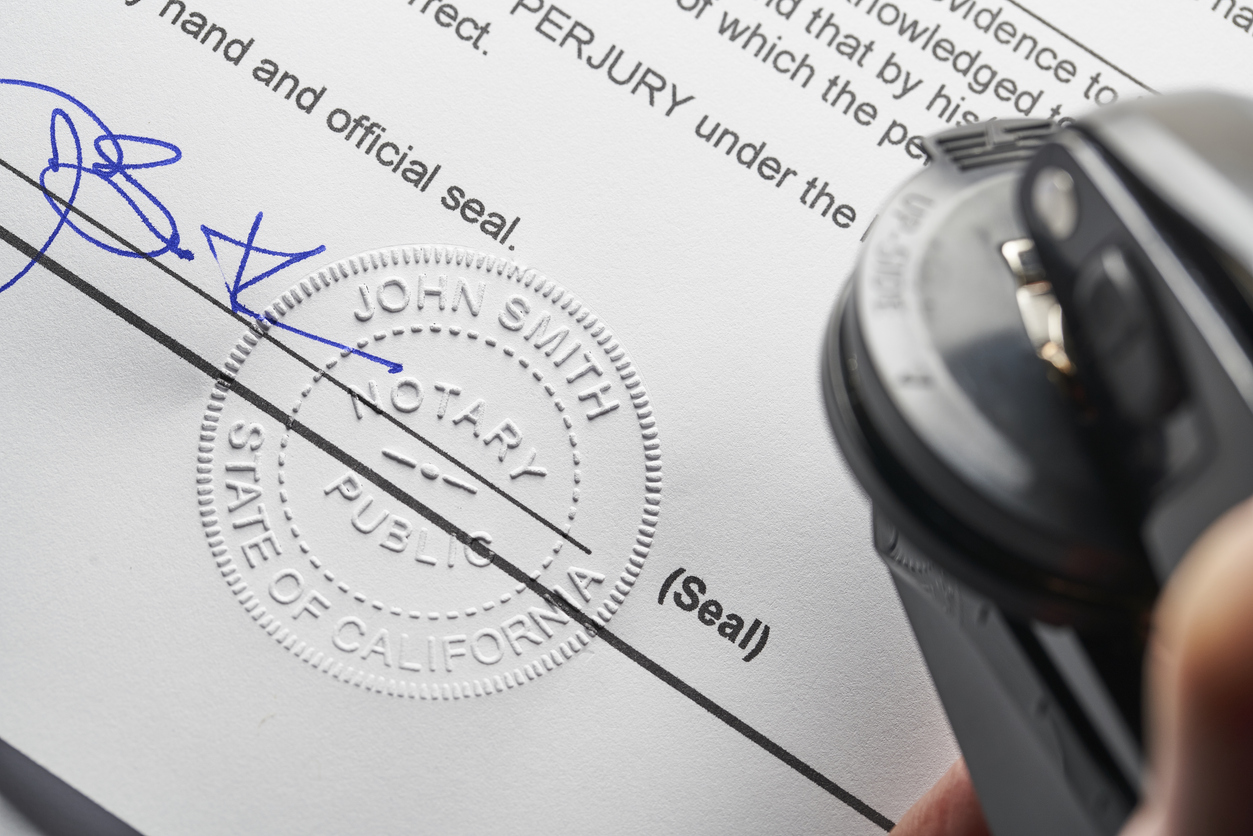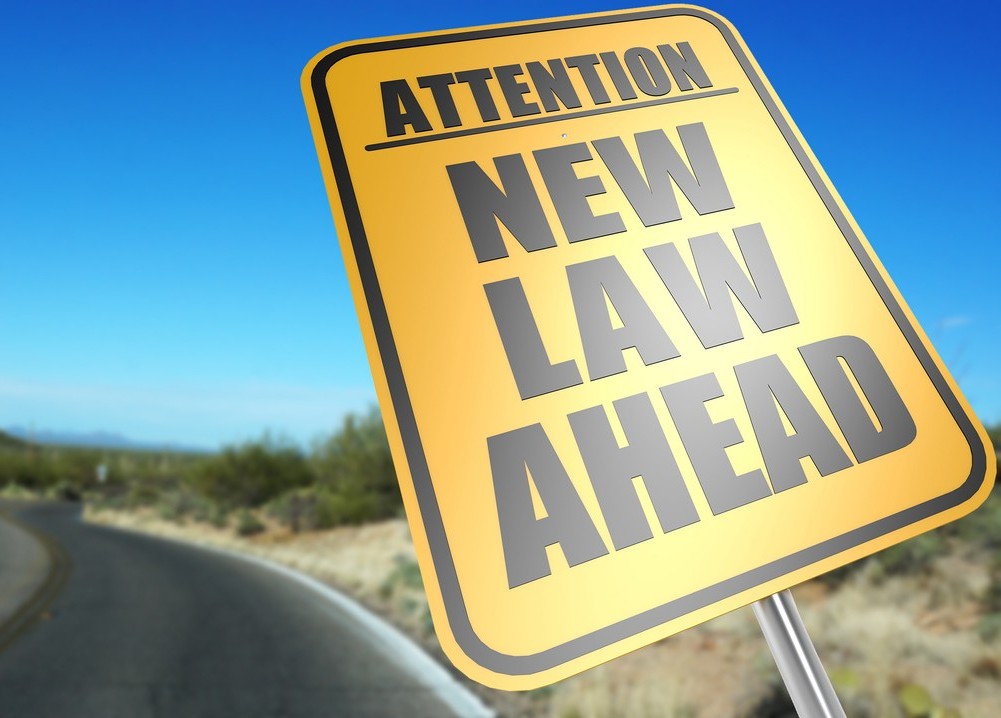(Chip’s Note—This is the fourth post of a weekly feature of this blog which I am writing to obtain perceptions from experienced and leading public adjusters in the public adjusting profession.)
Who should you learn from? There is so much misinformation and wrong information available today from people that are really good at social media advertising or just trying to get your eyes on their website, that the answer is really hard to discern—who are the true professionals who have withstood the test of time and have achieved measurable success whom you should trust to learn from?
The answer does not become easier when people like me say in speeches—”I listen to everybody and learn from each of them.” But what I really mean is—”I listen and vet what everybody says, and you truly have to listen carefully, consider the source, and then take the best of what people say and do—sometimes that means doing the opposite of what they say.”
Matthew Blumkin has a lot of knowledge that is extraordinarily valuable to those in the public adjusting field. To say that I learned a lot from him during this week’s interview and writing this blog would be an understatement. Indeed, I wrote Mike Duffy and told him to have Matt signed up as our keynote speaker at our firm’s next attorney retreat because I learned so much from interviewing him. I want to make certain our firm attorneys and staff learn the same things as well.
After finishing this interview process and while writing this post, my thought was, “It is no wonder that Matthew Blumkin has so many celebrity clients with multimillion-dollar claims.” He once called me about meeting his son with an owner of the Oakland Raiders because of an esoteric claims issue on an eight-figure loss. Matt later showed up in the owner’s suite at the Buccaneer’s game to say how much he was enjoying his time in Tampa Bay. His beloved Raisers and his Raider’s owner client were destroying my Tampa Bay Buccaneers in Tampa.
In a world where people fly all over searching for business, Matt Blumkin’s firm is usually at home taking care of their clients in Los Angeles and focusing on their clients’ claims problems. There is a lot to be said for this because you know the opposing adjusters, consultants, and issues of the claims in your backyard.
I also wanted to interview Matthew because my first three posts about the Public Adjuster spotlight were about public adjusters that were generational in the same firm rather than somebody coming into the public adjuster business from a different profession. I wanted to explore and learn from somebody who is now a recognized leader whose first business was not public adjusting because I think many could relate to this. Indeed, many readers of this blog who are in a different profession or working for the insurance industry may be thinking of this.
So, here is the interview:
What is the history of Greenspan?
In 1946, Sidney Greenspan moved from Philadelphia to Los Angeles after starting his public adjusting carrier at Young & Associates. He started Sidney Greenspan & Company, which eventually became The Greenspan Co. in the 1980s. In 2003, to better handle and represent the diverse cultures and business personalities in Greenspan’s vast area, ownership regionalized the control into two operating centers, one in Northern California, headquartered in South San Francisco, and one in Southern California, headquartered in Los Angeles (Northridge). I am the owner of Greenspan’s Southern California offices. I still work closely with Steven Severaid, who is the President of Greenspan’s Northern California offices, as our companies collaborate on matters for our clients, joint marketing, and mutual assistance on claims.
What is your personal background? What interested you in becoming a public adjuster?
I was born and raised in Encino, California. I attended the University of California, Riverside, and then received my law degree in 1995 from Southwestern University School of Law. I handled complex litigation matters at several prominent Los Angeles law firms. My work was primarily representing insurance companies and defending professionals, including insurance agents and brokers, as well as attorneys. I also served for over two years as the legislative legal counsel in the Federated States of Micronesia, Kosrae, and traveled throughout the Pacific rim to provide advice and legal support. Through my background handling insurance defense work, I came in contact with hundreds of claims handled by public adjusters relating to the never ending 1994 Northridge Earthquake litigation. In 2007, I was able to reconnect with Bill Rake, who was President of Greenspan, about bringing my experience to Greenspan as a public adjuster. I had previously known Bill Rake from long time family relationships starting in 1975, and changing professional direction seemed like a good opportunity and a mutual benefit for myself, my family, and to the Greenspan’s team at that time.
Was it difficult to change professions? What were the challenges, and how did you overcome those?
Changing careers from a full-time litigation attorney to becoming a public insurance adjuster was challenging, exciting, and frustrating at the same time. It took several years to modify my thought process from utilizing the law and the tools available to me as an attorney to working as a public adjuster and advocating differently on behalf of policyholders in first-party insurance claims. The process of preparing and presenting an insurance claim in real time immediately following the loss producing event is very different from the damage calculations years after while in a litigation setting. The ability to learn the structure and sequencing of adjustment steps took me three to four years of trial and error in order to feel comfortable with the full process and seeing a path for our client’s recovery from the outset of a claim.
Tell me how your firm is structured. What are your biggest day-to-day challenges? What is your current role in the firm?
The Greenspan Company is on the larger size of public adjusting firms with approximately 65 team members in the Southern California offices. We are organized into a C-Suite, management team members, team leads, and staffing. We have been able to organize our firm into operations, acquisition of business, marketing, building adjusting, personal and business property adjusting, Matterport and drone flights, estimating, and support staff. We have also found added value in vetting and having a team of outside consultants and specialists for client-specific activities such as art appraisers, building estimators, forensic and structural engineering, geotechnical, specialty trades, forensic accounting, and other necessary and regularly encountered claims activities. Currently, as the CEO and Managing Partner, my role in the firm is to oversee the operations, interact with the management team, assist with the acquisition business, attend many of the charitable events that we participate in as a company, provide CE classes to Brokers and Agents through our Department of Insurance approvals, work with the marketing team and several foundations our company has been involved with over the years. We continue to develop and grow our management team and supervisors so that they are able to roundtable claims, handle issues as they arise in real-time, and allow our firm to act quickly and responsively for our clients.
What makes the public adjusters performing the best in your firm tick? Why do some succeed versus others who do not?
We have been very fortunate to have hired numerous carrier and independent adjusters over the past four years. Their 15 to 25 years of adjusting experience provide a starting point for transitioning to becoming a public adjuster. The best public adjusters at our firm have the ability to accurately and quickly complete their policy coverage review, create a level of trust with the clients, and work in a cooperative manner with the adjusters and consultants representing the carriers. The ability to be mindful and carefully listen to all sides while remaining an advocate for the policyholder is critical to one’s successful resolution as a successful public adjuster. The failure to do so is the most likely reason for creating an unresolvable claims situation.
I have always been amazed at your close family ties. How do you keep a balanced life? Do you plan it? How do you say “no” to the demands of running such a large organization?
I am still learning how to balance the work-life balance. Everyone in the company, including myself, needs time to step away from work and allow ourselves to be fully present when spending time with family and friends. I have a “do not book” block of time that I can fill with my personal activities. I schedule family vacations or “Fridays off” months into the future so that we all have an event to look forward to on a personal and regenerative level. Saying “no” to work is a skill set that needs to be developed and practiced. Remembering to find quality time with my family and friends is a constant struggle that requires diligent efforts. Trusting our experienced and highly skilled management team to handle issues and make decisions within their group and to have them interact with each other on the management level has relieved many of the daily issues that used to arise at my desk. Also, being preemptive with team meetings on a regular schedule allows for a more balanced work-life balance.
Tell me about your experience of being on the NAPIA ladder. What has it taught you? Why should a young public adjuster go to NAPIA meetings?
The Greenspan Company has been involved with NAPIA for over 50 years. Sidney Greenspan and Bill Rake are past NAPIA Presidents. Our firm has routinely served on the Board of Directors and many of the NAPIA committees. I started attending NAPIA meetings 14 years ago and was elected to the Board of Directors twice before being elected to become an officer. I am now the First Vice President. NAPIA has allowed me to develop relationships and work with public adjusters from across the country. Those public adjusters are with firms of all different sizes and structures different than Greenspan. Working as an officer has allowed me to work in an environment of cooperation and goal driven discussions about our profession. It requires looking at both the immediate needs and long-term goals of enhancing the public adjusting industry. I believe it is important for younger or newer public adjusters to surround themselves with more experienced public adjusters in order to roundtable issues, discuss what is happening in our industry, develop new connections and mentors, understand the business side of public adjusting as well as learning the spirit of NAPIA’s professional code of conduct. There is a depth of knowledge and experience you cannot find anywhere else other than from NAPIA members and membership. NAPIA has an excellent ambassador program that allows new members to be mentored by experienced public adjusters and allow for a safe space for questions to be answered.
What advice would you give to a person thinking about leaving another job or profession and becoming a public adjuster?
Do your research, speak with public adjusters in your area, and also talk to anyone that you know who has had a significant insurance homeowners or business claim. Most importantly, listen to what the reality is of what a public adjuster can do as an advocate for their clients, and also the limitations. Even with a background in claims or construction, it takes years to learn the trade of public adjusting, so one has to allow space to be patient during this process.
What are your worries, fears, hopes, and dreams for the public adjusting profession?
My first priority, especially as a NAPIA officer, is that we continue to work to keep public adjusting as an honorable and necessary profession. I do have several fears that would impact the profession of the public adjuster. First is the insurance carrier’s attempt to limit the ability of policyholders to hire an advocate such as a public adjuster. Second, public adjusters whose actions and activities reflect poorly on the profession create an environment whereby all public adjusters can have their livelihood and ability to work jeopardized. Finally, the changes in the insurance company’s willingness to insure residential and commercial properties are leaving people and business owners with fewer and fewer options for their insurance needs or creating an underinsurance situation after the claim occurs.
I hope we can enhance our profession by finding and developing new public adjusters who are ethical, professional, and can express empathy for our clients in the difficult time post-claim. I hope we can expand the number of professional, ethical, entrepreneurial, and motivated public adjusters, as we do not have enough in the profession to assist the vast numbers of policyholders that would be best served by qualified public adjuster representation.
What is one thing you wish you should have done differently in your first five years as a public adjuster?
Develop a full and complete understanding of the process by which a carrier and independent adjusting firm work in conjunction with their consultant team in order to expedite the claims process for our clients. Learning what is needed in the carrier’s claim file and at what level of understanding was required is knowledge that can be taught to new public adjusters early in their careers. It is a unique skill, almost an art, to be able to timely and correctly explain the policyholder’s concerns and needs within the context of the insurance policy and claims adjustment regulations so claims are resolved.
Matthew Blumkin is a special person with a lot to learn from. His dedication to his profession, his firm, and his family is to be admired. It is not easy to become the top of any successful larger business being in existence for over 75 years. This is especially true when you are not from the founding family. Hard work and learned wisdom can lead to success. It is obvious to me why Matt has become successful and a leader in his field.
His view about the “art” of public adjusting is not to be taken lightly. In any profession, experience matters. Learning from others that are true “contenders” rather than “pretenders” is important for all to consider.
Thought For The Day
In Los Angeles, everyone is a star.
—Denzel Washington




